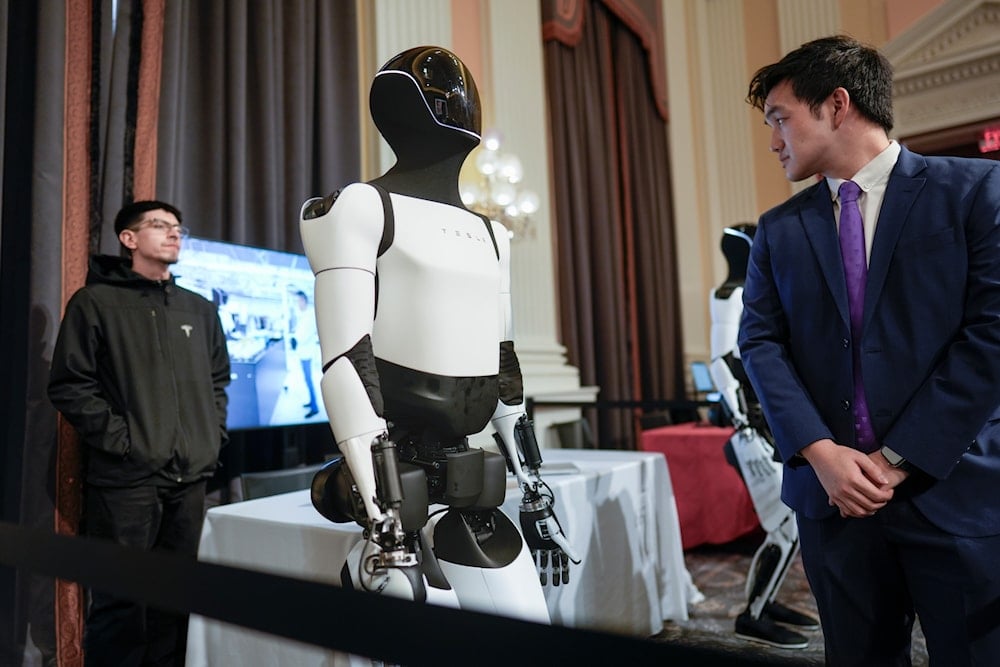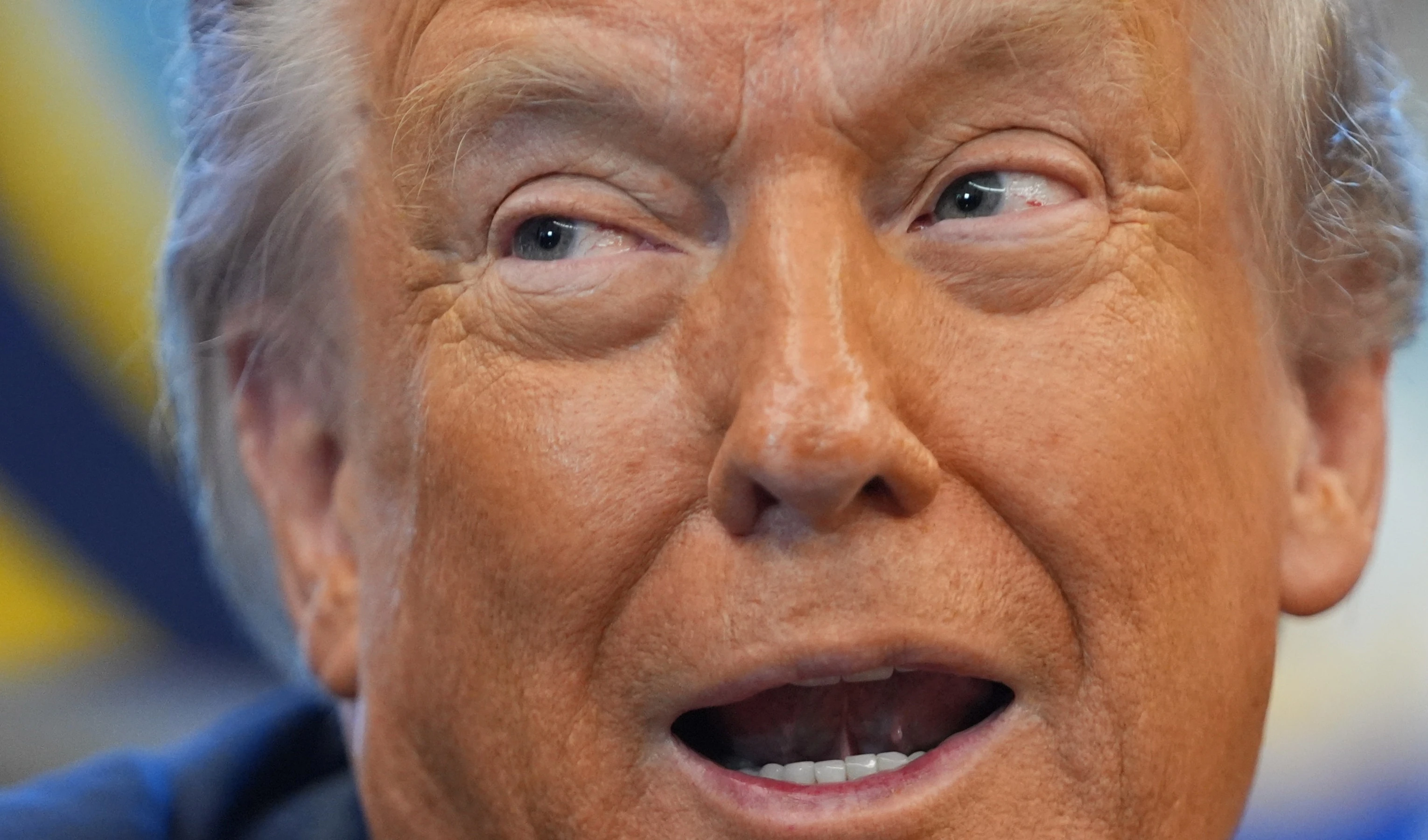Trade tariffs slow US robotics growth, raise costs: FT
Tariffs on robotics are slowing US progress in the field, with supply chain issues and rising costs threatening the industry.
-

A Tesla robot is displayed as US robotics companies look for congressional support to compete with Chinese companies, Capitol Hill, Washington, on March 26, 2025. (AP)
Tariffs on robotics are hindering the growth of the industry in the US, with supply chain disruptions and rising costs slowing down progress, a report by the Financial Times (FT) on Friday revealed. Despite promising long-term prospects, the robotics sector now faces new obstacles due to trade policies and weak market demand.
Tariffs slow progress of robotics
According to the report, the uncertainty caused by Washington's tariff policies is paralyzing factories and delaying investments, adding that the automotive industry, once a key driver of demand for robotics, is now at the center of these trade tensions.
With unclear or declining sales forecasts, few manufacturers are willing to expand or upgrade their equipment. Other industries are also feeling the strain, as the broader economic impact of tariffs on robotics dampens enthusiasm for new technological adoption, according to the FT.
Supply chain challenges and rising costs
While the US has several robotics manufacturers, the country relies heavily on China for critical components, the report details, adding that China is a major supplier of materials used in actuators, essential parts that convert electrical signals into physical movements.
According to the Bank of America, however, actuators make up more than half of the material costs. If costs continue to rise or if supply chains become more restricted, US ambitions in the robotics industry may falter.
Read next: Why the US is losing the robot race to China
China’s role in the global robotics industry
The FT report mentioned that China leads in industrial robotics and shares dominance with the US in humanoid robotics, which requires precision mechanics and artificial intelligence to mimic human actions.
However, even the market for humanoid robots is under pressure. Shenzhen-based UBTech, a leader in humanoid robotics, recently lowered its forecast for robot shipments between 500 and 1,000 units to just 500. This prompted Citigroup to cut its revenue outlook for the company by 17%, raising doubts about the short-term growth of humanoid robots in factories, hospitals, and homes.
US dependence on Chinese components
Moreover, the FT report stresses that China remains the largest market for robots, installing just over half of the world's total, ranking second in manufacturing behind Japan but producing four times more than Germany, which comes in third. By contrast, the US market significantly lags.
While tariffs on robotics threaten to delay the adoption of advanced technology, they may also slow the automation of jobs. As a result, this situation highlights how trade policies, particularly the US-China trade war, could temporarily help sustain employment in American industries.
On that note, The New York Times reported on Wednesday that China is deploying artificial intelligence-powered robots across its factories at an unprecedented pace, transforming the country’s manufacturing capabilities and strengthening its position in the ongoing trade war.
These robots, maintained by engineers and electricians, are significantly reducing production costs while improving quality, giving China a competitive edge in the face of US tariffs and other trade barriers from the European Union, Brazil, India, Turkey, and Thailand.
China now has a higher density of factory robots per 10,000 manufacturing workers than any country except South Korea and Singapore, according to the International Federation of Robotics. This rapid automation, driven by government policy and substantial investment, is enabling China to sustain mass production even as its labor force ages and industrial job preferences shift.
Read next: US raises tariffs on Chinese goods to 245%

 4 Min Read
4 Min Read










